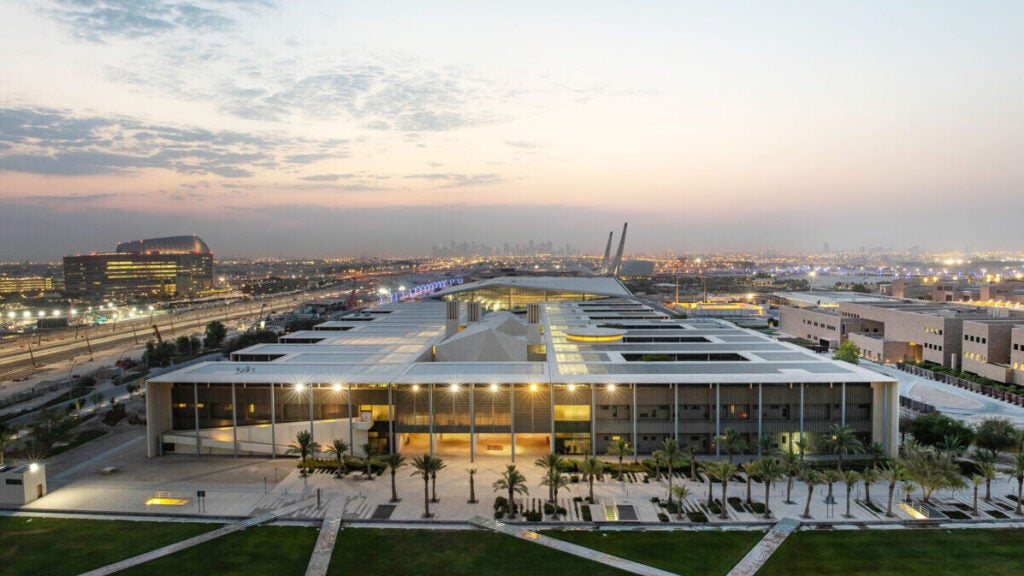First Ethnographic Research on Hamad Airport is Conducted by Georgetown Students

New research conducted by students at GU-Q under the mentorship of Dr. Firat Oruc, has provided the first evidence of how Hamad International Airport (HIA) has changed Qatar, and how it continues to shape Qatar’s future far beyond the World Cup.
Ranked as the second-best airport in the world at the Skytrax World Airport Awards 2023, there is no doubt that Hamad has changed the industry. Primary research mentor and project lead, Dr. Firat Oruc, said the student research offers a deeper understanding of the airport’s influence.
“This is the first ethnographic project of its kind in Qatar, and our students are uniquely placed to study mega-structures like airports from a human-centered, contextualized, and multi-disciplinary perspective, which helps us understand the real experiences, meanings, and conflicts related to these structures.”
“Airports are more than just transportation hubs with great gift shops—they are complex and dynamic environments that have far-reaching effects on the societies they serve,” said Syed Taha Kaleem Bukhari (SFS’22), who along with his peers Muhammad Saad Ullah (SFS’23) and Tanner Manley (SFS’22), devoted a good part of their year to a project titled “Qatar Connects the World: An Ethnography of Hamad International Airport.”
Their paper seeks “to demonstrate the exact impact of the Hamad International Airport on the sociocultural, economic and urban development of Doha whilst exploring the basic relationship between international connectivity and urban development.” To do that, they won funding from the Qatar National Research Fund (a member of Qatar Foundation) through its Undergraduate Research Experience Program (UREP28-303-5-035).
And that local funding is emblematic of the students’ interest in a grassroots approach to filling a gap on ethnographic studies on Qatar and the region, explained Muhammad.
“Our research is based in Qatar, it revolves around Qatar-based institutions, the airport and Qatar Airways (QA), and it focuses on the impact on Qatari culture and society.”
For the trio, that meant getting out of the library and into the field, where they conducted interviews with people who work in the industry, as well as tourists and travelers who use the airport’s services. They also surveyed media sources and advertising campaigns and conducted observational fieldwork from within the airport, collecting diverse viewpoints with one resounding conclusion, according to Tanner: “While HIA and QA have been instrumental in creating new urban centers and driving growth, our research also surfaced some of the challenges such rapid change brings for local cultural practices and populations.”
Dr. Rogaia Mustafa Abusharaf, GU-Q professor of anthropology and the project’s second research mentor, shared that the idea for the project emerged from a research discussion with faculty at Harvard University Graduate School of Design involved in the Gulf Encyclopedia for Sustainable Urbanism (GESU), a project focused on sustainable development and sponsored by MSHEIREB, a QF subsidiary. “Professors Nader Ardalan and Spiro Pollalis played a critical role in our research.”
The research team envisions a promising future for inquiry into HIA’s broader impact on Qatar’s urban development, including issues of land-use and sustainability, with relevance to many stakeholders including researchers, government officials, businesses, and the public. They also have plans to use collected data to prepare a framework that can be translated into a full-fledged development model to assist policy making around future mega projects.